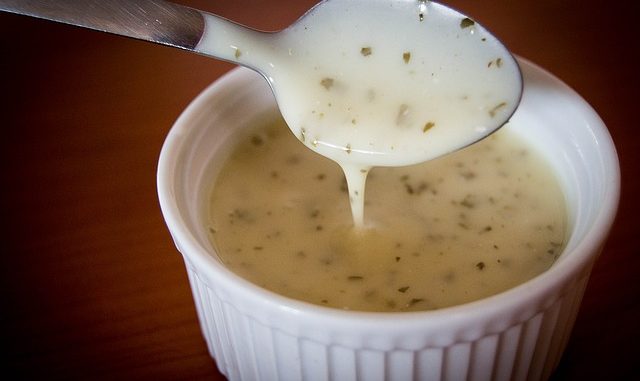
The modification of starch allows the food developer greater options in the use of this key ingredient. The modification is usually through chemicals and they are sometimes referred to as chemically modified starches. In a few instances the chemical modification produces cross-linked starches which have more robust mechanical and thermal resistance.
They are often added in preference to native starches because they offer so many functional benefits especially in improving the texture of foods. Modification of starch can lead to viscosity generation or reduction, freeze-thaw stability, better gel strength and appearance with control over syneresis (gel shrinkage). They are also less likely to suffer retrogradation after being gelatinised. They are often used too for improved solubility, and clarity.
Modified starches are used in:
- sauces and soups
- pasta and noodles
- meat, poultry, fish & seafood
- potato products
- snacks
- baby foods
- confectionary
Types Of Modified Starch
There are two essential types of modified starch: substituted or derivatised and cross-linked. There are combinations of both.
-
the Substituted Modified Starches
A variety of additional groups can be added to starch to change functionality. The starch esters are split into three types:
- acetate starches
- phosphate starches
- succinylated starches
The E numbers of these starches are:
- monostarch phosphate (E 1410),
- distarch phosphate (E 1412),
- phosphated distarch phosphate (E 1413),
- acetylated distarch phosphate (E 1414),
- acetylated starch (E 1420),
- acetylated distarch adipate (E 1422),
- starch sodium octenyl succinate (E 1450),
- starch aluminium octenyl succinate (E 1452)
There are two types of starch ethers:-
- carboxymethyl starch
- hydroxylpropyl starch
These have the E numbers:
- hydroxypropyl starch (E 1440),
- hydroxypropyl starch phosphate (E 1442),
The modification occurs to starch in its granule form.
Only a low level of substitution is needed to change the functional performance of the starch. It mainly changes the linearity of the starch.
- slows retrogradation after gelatinization has occurred,
- increases water binding capacity,
- lowers gelation temperature,
- introduces hydrophobic groups which contributes to their emulsification properties
- produces clearer gels
Starch Acetates
A starch where an acetyl group is added forming an ester linkage. Starch acetates have good paste stability and make clear starch solutions as well as gels. the acetate groups serve to disrupt the amylopectin chain which prevents gel retrogradation.
They are used in ice creams and cheesecakes as well as various dairy application.
Oxidised Starches
Oxidised starches have better properties than native starches such as improved stability, reduced anti-retrogradation and better transparency. They have the E number E1404. An acetylated version of oxidised starch is E 1451.
Oxidised starch is a form of modified starch that is created by reacting native starch with various oxidants under a controlled temperature and pH value.
Oxidants include hydrogen peroxide, oxygen, hypochlorite, ozone, permanganate, and organic acids. The oxidants have their own issues such as operating at a higher pH, higher temperatures, long reaction times as well as environmental pollution.
Chlorine dioxide (ClO2) is a powerful oxidising agent and is being exploited for this purpose.
Regulatory Position Of Starches In Europe
Twelve modified starches are authorised as food additives in the EU. These are labelled either by their specific names or by their E-number on the ingredient list. As with all additives used in food in Europe, they have undergone rigorous testing by the European Food Safety Agency (EFSA), most recently in 2017 and their use in food and beverages is regulated under Regulation (EC) 1333/2008 on food additives.
The starches have the E-numbers E1413, 1414, 1412, 1413, 1414, 1420, 1422, 1440, 1442, 1450, 1451 and E1452.
None of these starches are absorbed intact in the gut. They are hydrolysed by gut enzymes and can be fermented by intestinal flora and fauna without too much issue.
Functional Uses Of Starches
The cross-linked waxy maize starches (CWMS) are used primarily as thickening or gelling agents where high heat and high shears is involved as in homogenization.
Distarch phosphate (E1412) is a good example of a starch that provides a smooth texture when used in hot fillings. It’s ideal for producing soft gels in low pH foods such as cheese melts and is regularly used as a fat replacer. The ingredient is commonly found in baked foods where a cream filling is needed or in soft fruit gels.
Acetylated starch (E1420) is a good thickening agent. This one is particularly stable at high temperature but low pH. Formulators prefer this for meat, vegetable and potato products. It also improves crispiness and reduces moisture loss in deep fried battered and breaded foods.
Acetylated distarch adipate starch (E1422) A number of starches are cross-linked which also adds to their functionality. An example of crosslinked corn starches are Clearam CH10 and CH20 from Roquette (France) which are primarily used as a thickener in sauces, soups and custards. It can also be found in plant-based cheeses, dairy foods and yogurt. Most if not all of these are waxy corn starches. The type depends on the degree of cross-linking. CH10 is less reticulated than CH20 so the former swells to a greater extent but is much more susceptible to shearing when heated.
One of the classic sauces is bechamel sauce which most of us have made for macaroni and cheese, lasagne etc. It’s a very simple sauce which is made in the home using butter, flour and milk or using cream if it needs to be richer. As Julia Childs, the chef who recreated French Cooking for most of us would say, the addition of seasonings are what turned a basic white sauce such as bechamel or veloute into something otherworldy.
The basic white sauce is relatively easy to make at home and then served fresh but to turn it into a grocery product means some rethinking. The flour which contains native starch is usually replaced with modified starch and xanthan gum may also be added. These sauces are often bottled or canned. To keep their stability on the shelf means employing retorting which implies high heat. Retort cooking means using modified starches.
The Starch In Food web-site gives better coverage on the nature of starches for use in the European Union.
Consumer Reaction To Modified Starch
Some consumers are starting to move away from chemically modified starches for the very reason that they are not thought of as being clean-label, of being food additives and using chemical processing. It is a misconception because the toxicity data shows that an enormous amount needs to be consumed to cause any ill health.
The latest ideas for finding alternatives appear to revolve around starch-based hydrogels which go back to native starches. The food research in this area is still being developed so watch this space as and when we find more information on the subject!


Leave a Reply